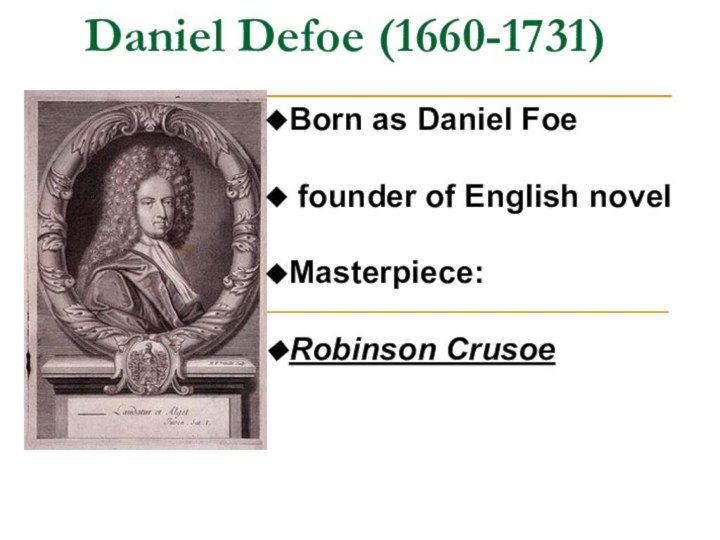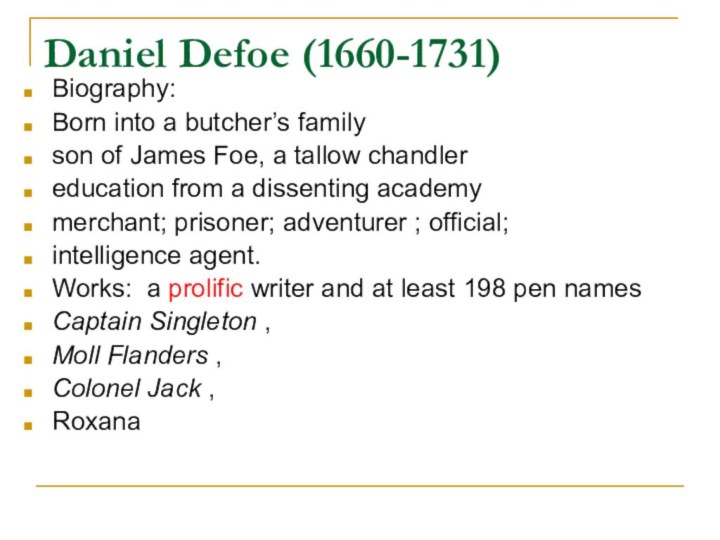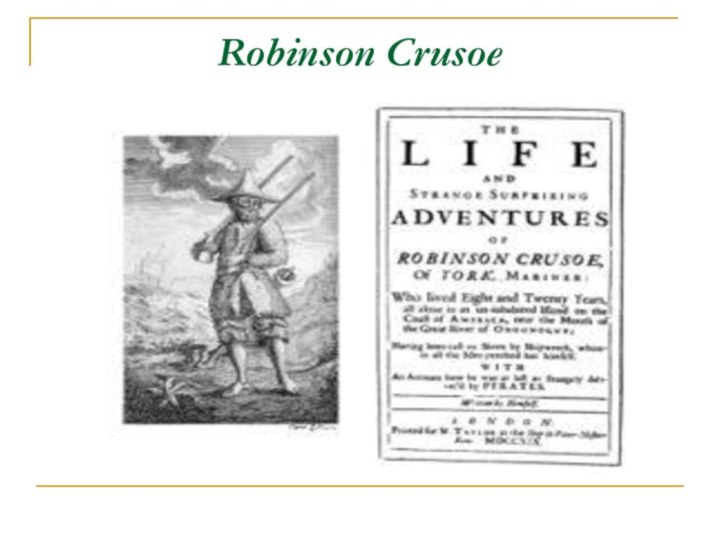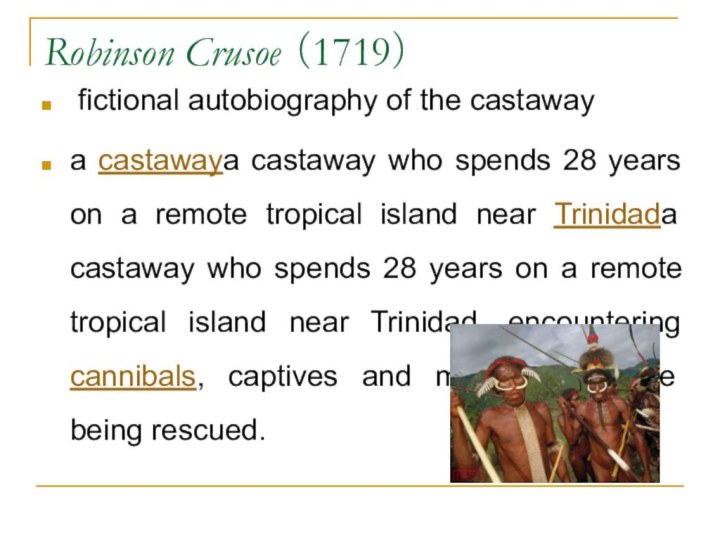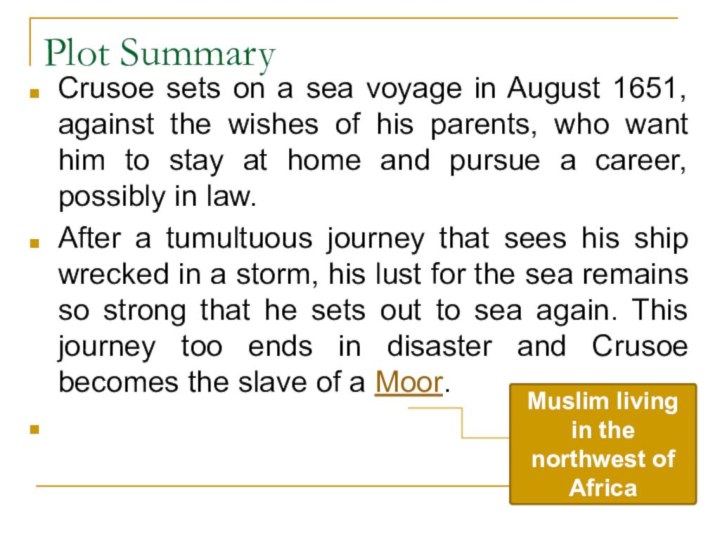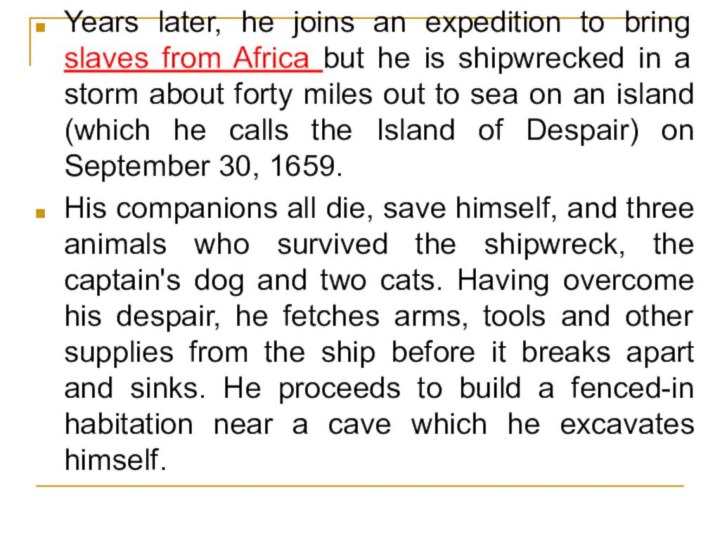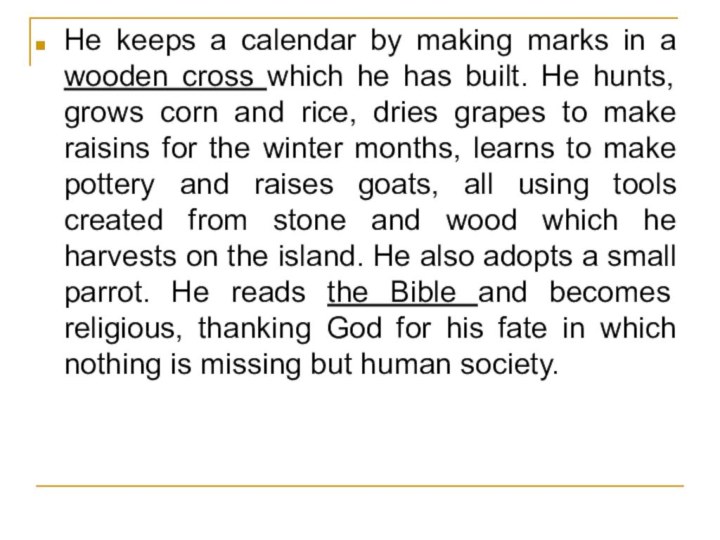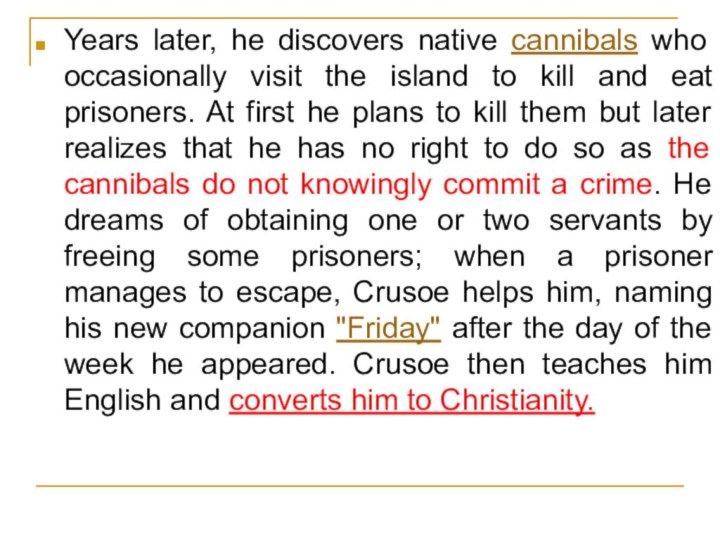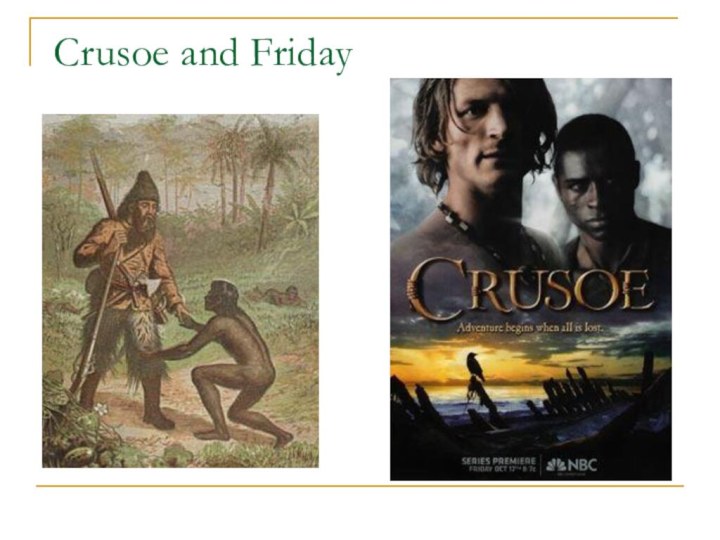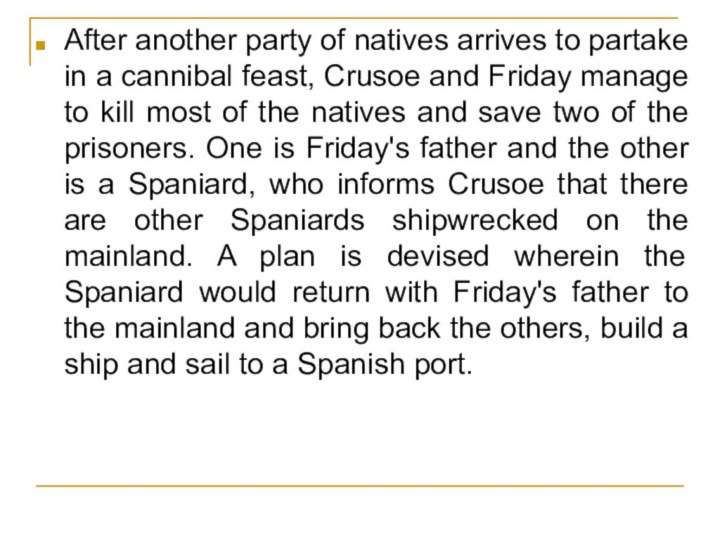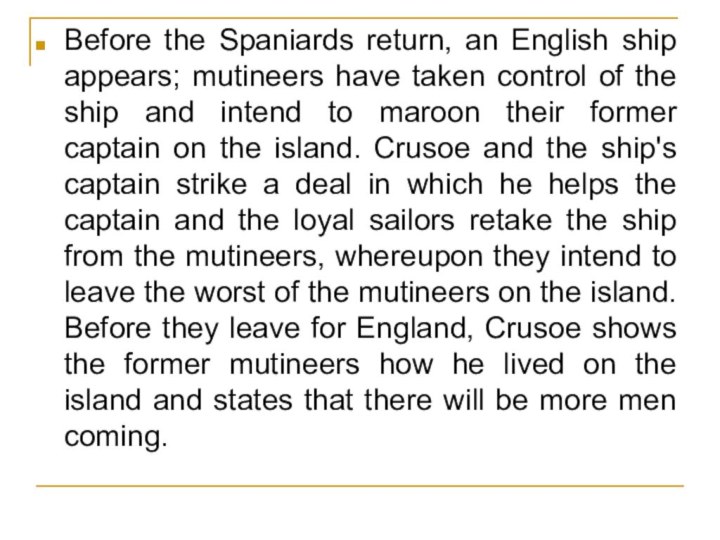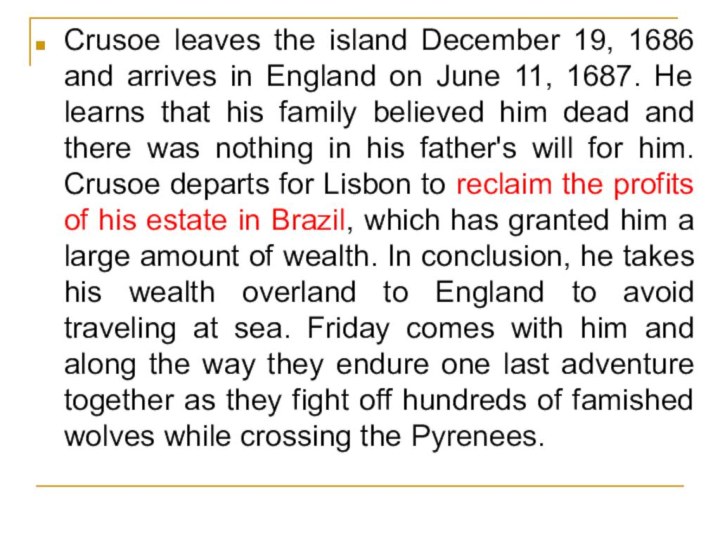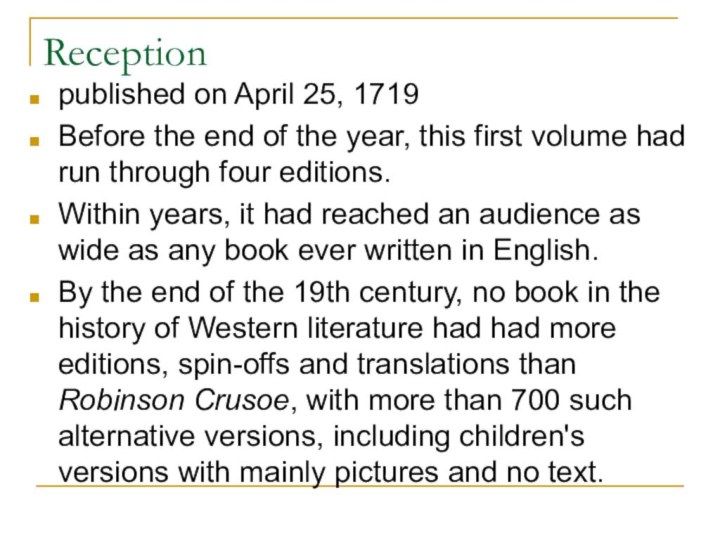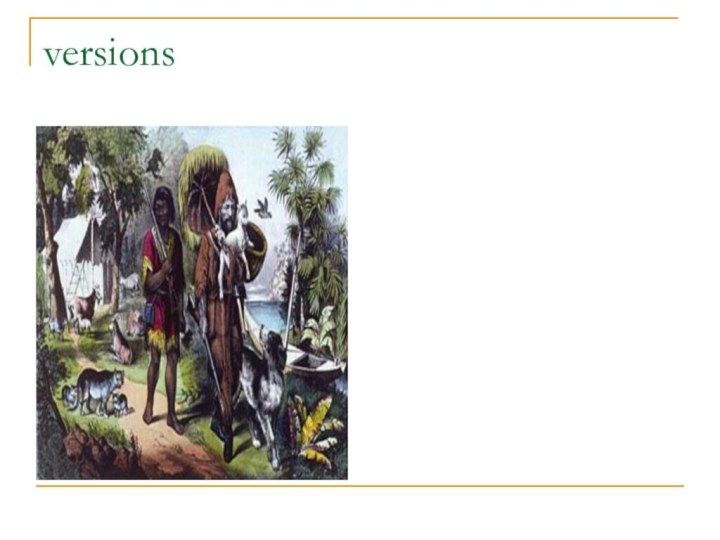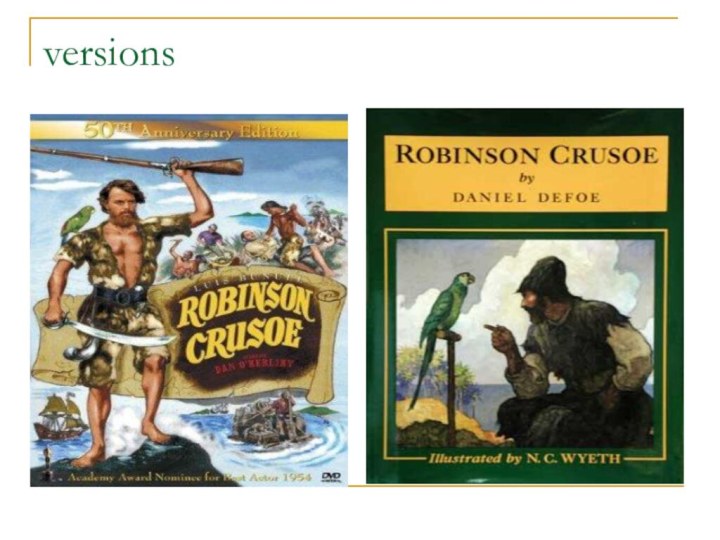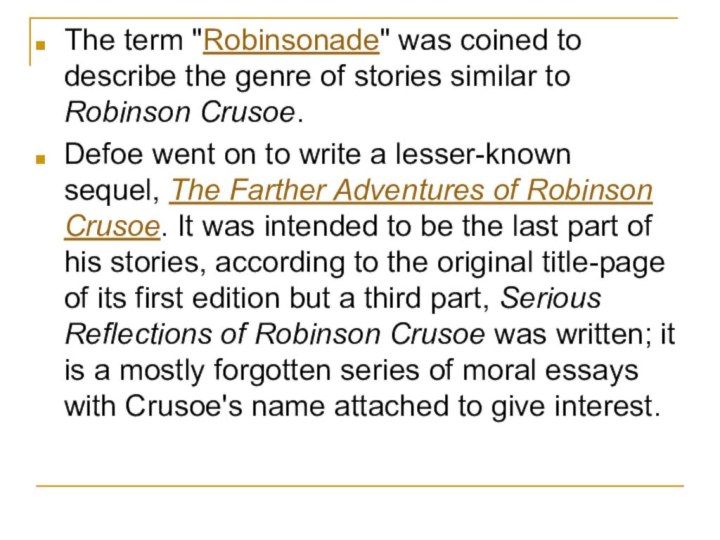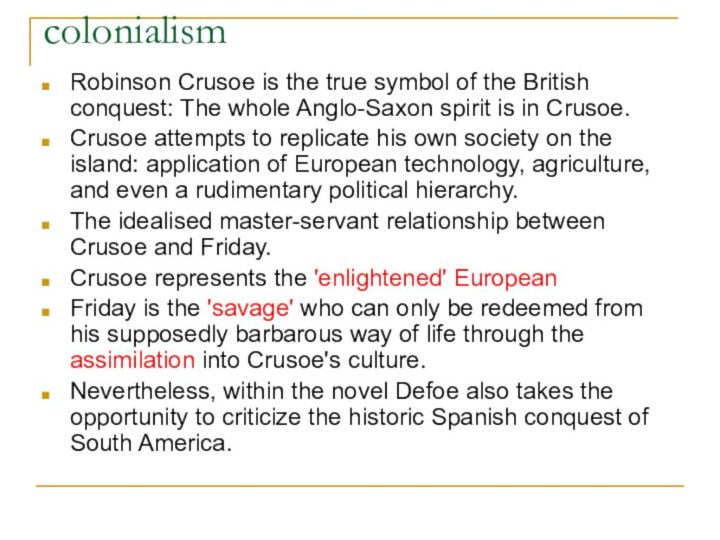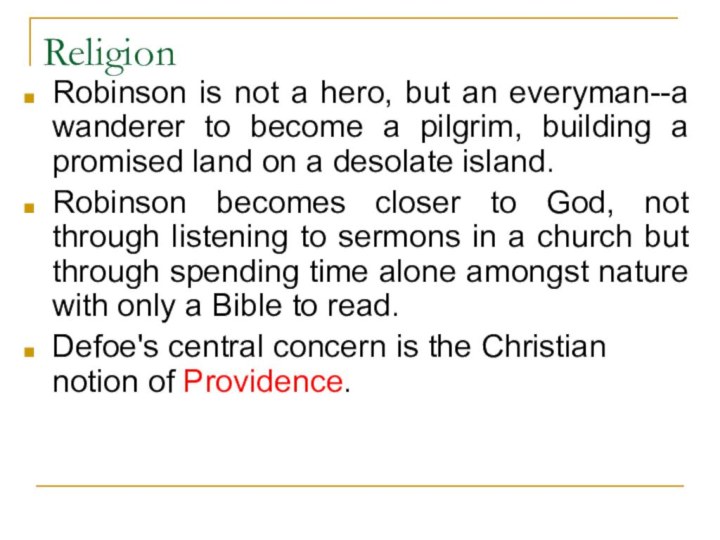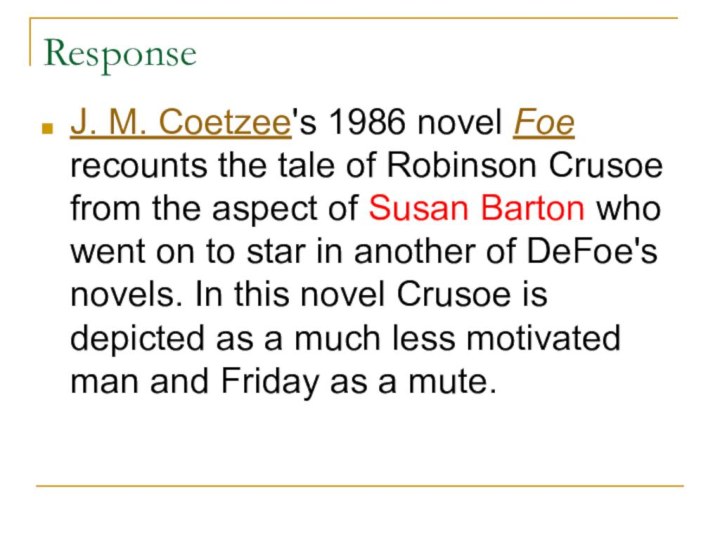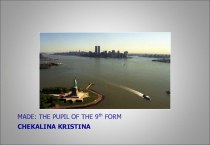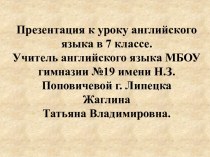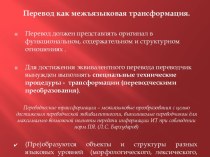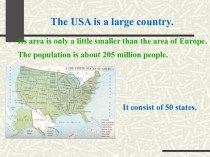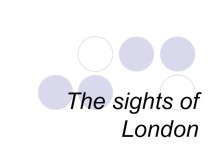Слайд 2
Daniel Defoe (1660-1731)
Biography:
Born into a butcher’s family
son
of James Foe, a tallow chandler
education from a dissenting
academy
merchant; prisoner; adventurer ; official;
intelligence agent.
Works: a prolific writer and at least 198 pen names
Captain Singleton ,
Moll Flanders ,
Colonel Jack ,
Roxana
Слайд 4
Robinson Crusoe (1719)
fictional autobiography of the castaway
a
castawaya castaway who spends 28 years on a remote
tropical island near Trinidada castaway who spends 28 years on a remote tropical island near Trinidad, encountering cannibals, captives and mutineers before being rescued.
Слайд 5
Plot Summary
Crusoe sets on a sea voyage
in August 1651, against the wishes of his parents,
who want him to stay at home and pursue a career, possibly in law.
After a tumultuous journey that sees his ship wrecked in a storm, his lust for the sea remains so strong that he sets out to sea again. This journey too ends in disaster and Crusoe becomes the slave of a Moor.
Muslim living in the northwest of Africa
Слайд 6
After two years of slavery, he manages to
escape and is rescued and befriended by the Captain
of a PortugueseAfter two years of slavery, he manages to escape and is rescued and befriended by the Captain of a Portuguese ship off the west coast of Africa. The ship is en route to BrazilAfter two years of slavery, he manages to escape and is rescued and befriended by the Captain of a Portuguese ship off the west coast of Africa. The ship is en route to Brazil. There, with the help of the captain, Crusoe becomes owner of a plantation
Слайд 7
Years later, he joins an expedition to bring
slaves from Africa but he is shipwrecked in a
storm about forty miles out to sea on an island (which he calls the Island of Despair) on September 30, 1659.
His companions all die, save himself, and three animals who survived the shipwreck, the captain's dog and two cats. Having overcome his despair, he fetches arms, tools and other supplies from the ship before it breaks apart and sinks. He proceeds to build a fenced-in habitation near a cave which he excavates himself.
Слайд 8
He keeps a calendar by making marks in
a wooden cross which he has built. He hunts,
grows corn and rice, dries grapes to make raisins for the winter months, learns to make pottery and raises goats, all using tools created from stone and wood which he harvests on the island. He also adopts a small parrot. He reads the Bible and becomes religious, thanking God for his fate in which nothing is missing but human society.
Слайд 9
Years later, he discovers native cannibals who occasionally
visit the island to kill and eat prisoners. At
first he plans to kill them but later realizes that he has no right to do so as the cannibals do not knowingly commit a crime. He dreams of obtaining one or two servants by freeing some prisoners; when a prisoner manages to escape, Crusoe helps him, naming his new companion "Friday" after the day of the week he appeared. Crusoe then teaches him English and converts him to Christianity.
Слайд 11
After another party of natives arrives to partake
in a cannibal feast, Crusoe and Friday manage to
kill most of the natives and save two of the prisoners. One is Friday's father and the other is a Spaniard, who informs Crusoe that there are other Spaniards shipwrecked on the mainland. A plan is devised wherein the Spaniard would return with Friday's father to the mainland and bring back the others, build a ship and sail to a Spanish port.
Слайд 12
Before the Spaniards return, an English ship appears;
mutineers have taken control of the ship and intend
to maroon their former captain on the island. Crusoe and the ship's captain strike a deal in which he helps the captain and the loyal sailors retake the ship from the mutineers, whereupon they intend to leave the worst of the mutineers on the island. Before they leave for England, Crusoe shows the former mutineers how he lived on the island and states that there will be more men coming.
Слайд 13
Crusoe leaves the island December 19, 1686 and
arrives in England on June 11, 1687. He learns
that his family believed him dead and there was nothing in his father's will for him. Crusoe departs for Lisbon to reclaim the profits of his estate in Brazil, which has granted him a large amount of wealth. In conclusion, he takes his wealth overland to England to avoid traveling at sea. Friday comes with him and along the way they endure one last adventure together as they fight off hundreds of famished wolves while crossing the Pyrenees.
Слайд 14
Reception
published on April 25, 1719
Before the end of
the year, this first volume had run through four
editions.
Within years, it had reached an audience as wide as any book ever written in English.
By the end of the 19th century, no book in the history of Western literature had had more editions, spin-offs and translations than Robinson Crusoe, with more than 700 such alternative versions, including children's versions with mainly pictures and no text.
Слайд 17
The term "Robinsonade" was coined to describe the
genre of stories similar to Robinson Crusoe.
Defoe went on
to write a lesser-known sequel, The Farther Adventures of Robinson Crusoe. It was intended to be the last part of his stories, according to the original title-page of its first edition but a third part, Serious Reflections of Robinson Crusoe was written; it is a mostly forgotten series of moral essays with Crusoe's name attached to give interest.
Слайд 18
colonialism
Robinson Crusoe is the true symbol of the
British conquest: The whole Anglo-Saxon spirit is in Crusoe.
Crusoe
attempts to replicate his own society on the island: application of European technology, agriculture, and even a rudimentary political hierarchy.
The idealised master-servant relationship between Crusoe and Friday.
Crusoe represents the 'enlightened' European
Friday is the 'savage' who can only be redeemed from his supposedly barbarous way of life through the assimilation into Crusoe's culture.
Nevertheless, within the novel Defoe also takes the opportunity to criticize the historic Spanish conquest of South America.
Слайд 19
Religion
Robinson is not a hero, but an
everyman--a wanderer to become a pilgrim, building a promised
land on a desolate island.
Robinson becomes closer to God, not through listening to sermons in a church but through spending time alone amongst nature with only a Bible to read.
Defoe's central concern is the Christian notion of Providence.
